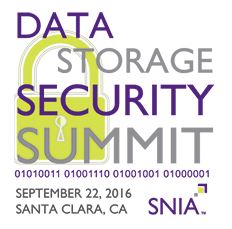 The ISO/IEC 27040:2015 Information technology - Security techniques - Storage Security standard provides detailed technical guidance in securing storage systems and ecosystems. However, while the coverage of this standard is quite broad, it lacks details for certain important topics.
ISO/IEC 27040:2015 addresses storage security risks and threats at a high level. This blog is written in the context of Fibre Channel. The following list is a summary of the major threats that may confront Fibre Channel implementations and deployments.
The ISO/IEC 27040:2015 Information technology - Security techniques - Storage Security standard provides detailed technical guidance in securing storage systems and ecosystems. However, while the coverage of this standard is quite broad, it lacks details for certain important topics.
ISO/IEC 27040:2015 addresses storage security risks and threats at a high level. This blog is written in the context of Fibre Channel. The following list is a summary of the major threats that may confront Fibre Channel implementations and deployments.
- Storage Theft: Theft of storage media or storage devices can be used to access data as well as to deny legitimate use of the data.
- Sniffing Storage Traffic: Storage traffic on dedicated storage networks or shared networks can be sniffed via passive network taps or traffic monitoring revealing data, metadata, and storage protocol signaling. If the sniffed traffic includes authentication details, it may be possible for the attacker to replay9 (retransmit) this information in an attempt to escalate the attack.
- Network Disruption: Regardless of the underlying network technology, any software or congestion disruption to the network between the user and the storage system can degrade or disable storage.
- WWN Spoofing: An attacker gains access to a storage system in order to access/modify/deny data or metadata.
- Storage Masquerading: An attacker inserts a rogue storage device in order to access/modify/deny data or metadata supplied by a host.
- Corruption of Data: Accidental or intentional corruption of data can occur when the wrong hosts gain access to storage.
- Rogue Switch: An attacker inserts a rogue switch in order to perform reconnaissance on the fabric (e.g., configurations, policies, security parameters, etc.) or facilitate other attacks.
- Denial of Service (DoS): An attacker can disrupt, block or slow down access to data in a variety of ways by flooding storage networks with error messages or other approaches in an attempt to overload specific systems within the network.
A new whitepaper, one in a series from SNIA that addresses various elements of storage security, is intended to leverage the guidance in the ISO/IEC 27040 standard and enhance it with a specific focus on Fibre Channel (FC) security. To learn more about security and Fibre Channel, please visit www.snia.org/security and download the Storage Security: Fibre Channel Security whitepaper.
And mark your calendar for presentations and discussions on this important topic at the upcoming SNIA Data Storage Security Summit, September 22, 2016, at the Hyatt Regency Santa Clara CA. Registration is complimentary - go to www. http://www.snia.org/dss-summit for details on how you can attend and get involved in the conversation.











 We’ll discuss how the SNIA Cloud Data Management Interface standard (CDMI) addresses these challenges by offering data and metadata portability between clouds and explain how the SNIA CDMI Conformance Test Program helps cloud storage providers achieve CDMI conformance.
Join us on July 19th to learn:
We’ll discuss how the SNIA Cloud Data Management Interface standard (CDMI) addresses these challenges by offering data and metadata portability between clouds and explain how the SNIA CDMI Conformance Test Program helps cloud storage providers achieve CDMI conformance.
Join us on July 19th to learn:

Leave a Reply